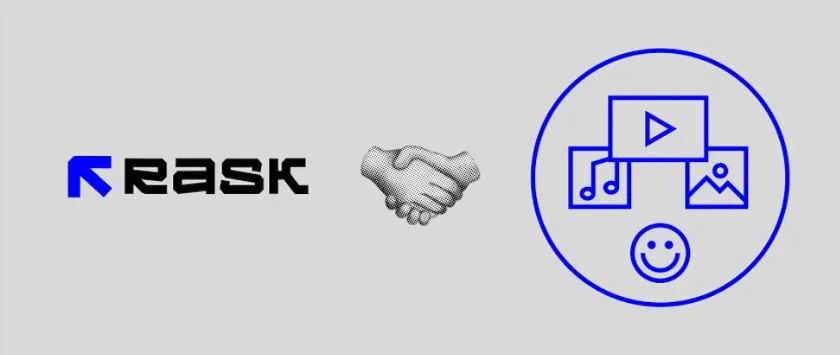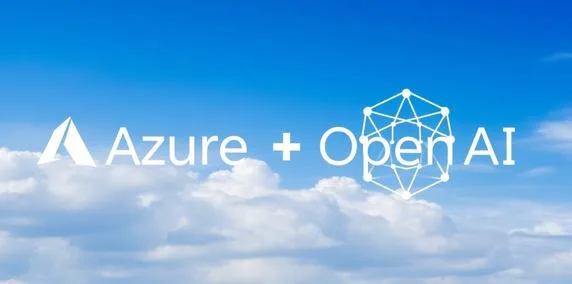How to Translate Documents with AI: Complete Guide Using Rask.ai’s Advanced Translation Technology
Understanding how to translate documents with AI has become essential for businesses, researchers, and individuals dealing with foreign language materials in our increasingly connected world. The evolution of AI-powered translation tools has transformed document translation from a time-consuming, expensive process requiring human translators into an accessible, efficient solution that maintains translation accuracy while preserving original formatting. This comprehensive guide explores the most effective methods for translating documents using artificial intelligence, with a focus on maximizing quality and efficiency.
The Revolution of AI Document Translation
The traditional translation process for documents involved significant challenges: high costs, lengthy turnaround times, and difficulty maintaining the original layout while ensuring accurate translations. Modern AI document translator solutions have addressed these pain points by leveraging large language models and neural networks to deliver high-quality translations that rival human translation in many contexts.
AI-powered translation represents a fundamental shift in how we approach language barriers. Instead of relying solely on human translators for every document translation need, organizations can now process multiple languages simultaneously while maintaining their brand voice and intended meaning across all target languages.
Understanding AI Translation Technology
The Foundation of AI Document Translation
When you want to translate documents with AI, the underlying technology employs sophisticated artificial intelligence systems that go far beyond simple word-for-word conversion. Modern AI translator platforms analyze entire documents to understand context, maintain translation memory for consistency, and adapt to specific file formats while preserving the original text structure.
The translation process involves several advanced components:
Neural Network Analysis: AI systems examine the source text through deep learning models trained on millions of document pairs across language pairs.
Context Recognition: Unlike basic translation tools, advanced AI-powered translation tool platforms understand relationships between sentences, paragraphs, and document sections.
Format Preservation: Sophisticated algorithms maintain original formatting, ensuring that translated documents retain their professional appearance and usability.
How AI Surpasses Traditional Translation Methods
The advantages of learning how to translate documents with AI become clear when comparing AI-powered translation with traditional approaches:
Speed and Efficiency: AI translation can process entire documents in minutes rather than the days or weeks required for human translation.
Cost Effectiveness: While maintaining high translation accuracy, AI solutions eliminate the significant costs associated with professional human translators.
Consistency: AI maintains consistent terminology and brand voice throughout large documents and across multiple projects.
Availability: AI translation tools operate 24/7, eliminating scheduling constraints that often delay traditional translation projects.
Step-by-Step Guide: How to Translate Documents with AI
Method 1: Using Rask.ai’s Advanced Document Translator
Rask.ai has emerged as a leader in AI document translation, offering comprehensive solutions that handle diverse file formats while maintaining exceptional translation quality. Here’s how to leverage this powerful platform:
Step 1: Access the Platform. Navigate to Rask.ai’s document translator interface. The platform is free to use for basic translation needs, making it accessible for individuals and small businesses exploring AI translation capabilities.
Step 2: Upload Your Document. Click the upload button and select your file. Rask.ai supports multiple file formats, including PDF documents, PowerPoint presentations, Word files, and even scanned PDFs. The system automatically detects the source language and prepares the document for translation.
Step 3: Select Target Language. Choose your desired target language from Rask.ai’s extensive language support options. The platform handles numerous language pairs, enabling translation between major world languages with high accuracy.
Step 4: Configure Translation Settings. Adjust settings based on your document type and requirements. For technical documents, research papers, or specialized content, you can optimize the AI translator for domain-specific terminology and context.
Step 5: Initiate Translation Start the translation process and monitor progress through the platform’s intuitive interface. AI-powered translation typically completes within minutes, even for lengthy documents.
Step 6: Review and Download. Examine the translated document for accuracy and formatting preservation. Download the translated file in your preferred format, maintaining the original layout and professional appearance.
Method 2: Leveraging Google Translate for Basic Document Translation
While Google Translate offers document translation capabilities, understanding its limitations helps set appropriate expectations:
Upload Process: Google Translate accepts various file formats and provides quick translation for basic documents.
Language Support: The platform supports multiple languages, but may struggle with complex formatting and specialized terminology.
Quality Considerations: While free to use, Google Translate may not maintain the translation accuracy required for professional or technical documents.
Method 3: Hybrid Approach for Complex Documents
For sophisticated translation projects, combining AI translation with targeted human review often produces optimal results:
Initial AI Processing: Use advanced AI-powered translation tools like Rask.ai for comprehensive document translation.
Strategic Review: Focus human translator attention on critical sections, cultural adaptations, and industry-specific terminology.
Quality Assurance: Implement systematic review processes to ensure the translated document meets professional standards.
File Format Compatibility and Technical Considerations
Supported Document Types
When learning how to translate documents with AI, understanding file format compatibility ensures smooth translation processes:
PDF Documents: Both text-based and scanned PDFs require different AI translation approaches. Advanced platforms like Rask.ai handle both types effectively.
Office Documents: Word files, PowerPoint presentations, and Excel spreadsheets maintain formatting through sophisticated AI processing.
Specialized Formats: Technical documents, research papers, and industry-specific file formats benefit from AI tools designed for complex document structures.
Maintaining Original Formatting
One of the most significant advantages of modern AI document translation is format preservation:
Layout Integrity: Advanced AI translator systems maintain original layout, including headers, footers, and page structure.
Visual Elements: Images, charts, and graphics remain positioned correctly in the translated document.
Typography: Font choices, sizing, and styling transfer accurately to the translated file.
Translation Accuracy and Quality Assurance
Factors Affecting Translation Quality
Several factors influence translation accuracy when you translate documents with AI:
Source Text Quality: Clear, well-written original text produces better translations than documents with errors or ambiguous language.
Document Complexity: Technical documents and specialized content may require domain-specific AI models for optimal accuracy.
Language Pair Considerations: Some language combinations have more extensive training data, resulting in higher translation quality.
Optimizing AI Translation Results
To maximize translation accuracy when using AI-powered translation tools:
Prepare Source Documents: Ensure original text is clear, properly formatted, and free of errors that might confuse AI systems.
Choose Appropriate Tools: Select AI translator platforms with proven performance in your specific document types and language pairs.
Implement Review Processes: Even the best AI translation benefits from human review, particularly for critical business documents.
Data Security and Confidentiality in AI Document Translation
Privacy Considerations
When deciding how to translate documents with AI, data security becomes paramount for sensitive materials:
Encryption Standards: Leading platforms like Rask.ai implement enterprise-grade encryption to protect document content during translation.
Data Handling Policies: Understanding how AI translation platforms store, process, and delete uploaded documents ensures compliance with privacy requirements.
Confidentiality Measures: Professional AI document translator services include confidentiality protections suitable for business and legal documents.
Compliance and Regulatory Considerations
Organizations handling regulated content must ensure their chosen AI translation solution meets industry standards:
GDPR Compliance: European organizations require AI translation tools that comply with data protection regulations.
Industry Standards: Healthcare, legal, and financial documents may require specialized AI translation platforms with appropriate certifications.
Audit Trails: Some organizations need translation tools that provide detailed records of the translation process for compliance purposes.
Advanced Features in AI Document Translation
Translation Memory and Consistency
Modern AI-powered translation platforms incorporate translation memory to ensure consistency across documents and projects:
Terminology Management: AI systems learn and apply your preferred translations for specific terms and phrases.
Brand Voice Preservation: Advanced platforms maintain a consistent tone and style that reflects your organization’s brand voice.
Project Continuity: Translation memory ensures consistency across related documents and ongoing translation projects.
Integration Capabilities
Professional AI document translator solutions offer integration options that streamline workflow:
API Access: Developers can integrate AI translation capabilities directly into existing document management systems.
Batch Processing: Handle multiple documents simultaneously, maintaining consistency across entire document sets.
Workflow Automation: Advanced platforms enable automated translation workflows for routine document processing.
Industry-Specific Applications
Business and Corporate Documents
Learning how to translate documents with AI provides significant advantages for business operations:
Contract Translation: Legal agreements and contracts benefit from AI translation that maintains precise terminology and formatting.
Marketing Materials: Brand consistency across multiple languages becomes achievable through advanced AI-powered translation.
Internal Communications: Employee handbooks, policies, and training materials can be efficiently translated while maintaining clarity and accuracy.
Academic and Research Applications
Researchers and educational institutions leverage AI document translation for:
Research Paper Translation: Academic documents require specialized terminology handling that advanced AI systems provide.
International Collaboration: Scholars can easily share and understand research across language barriers.
Educational Material Adaptation: Course materials and textbooks can be adapted for international student populations.
Technical Documentation
Engineering, software, and technical industries benefit from AI translation that:
Preserves Technical Accuracy: Specialized AI models understand technical terminology and maintain precision.
Handles Complex Formatting: Technical documents with diagrams, code snippets, and specialized layouts translate effectively.
Maintains Standards Compliance: Industry-specific terminology and standards are transferred accurately across languages.
Cost-Benefit Analysis of AI Document Translation
Economic Advantages
Understanding how to translate documents with AI reveals significant cost benefits:
Reduced Translation Costs: AI translation typically costs a fraction of human translator fees while maintaining comparable quality for many document types.
Faster Turnaround: Immediate translation availability eliminates project delays and enables faster international business operations.
Scalability: Organizations can translate large volumes of documents without proportional increases in cost or time investment.
Quality and ROI Considerations
The return on investment for AI document translation depends on several factors:
Document Volume: Organizations with regular translation needs see immediate benefits from AI translation implementation.
Quality Requirements: While AI translation handles most content effectively, critical documents may still benefit from human translator review.
Long-term Strategy: Building AI translation capabilities supports long-term international expansion and multilingual operations.
Future Trends in AI Document Translation
Emerging Technologies
The future of AI document translation continues evolving with advancing technology:
Multimodal AI: Next-generation systems will process text, images, and layout simultaneously for even better translation accuracy.
Real-time Collaboration: AI translation will enable real-time multilingual document collaboration and editing.
Domain Specialization: Industry-specific AI models will provide even higher accuracy for specialized document types.
Integration with Business Processes
AI document translation will become increasingly integrated with standard business operations:
Automated Workflows: Document management systems will include automatic translation triggers for international distribution.
Quality Assurance: AI systems will incorporate advanced quality checking and validation processes.
Cultural Adaptation: Future AI translation will go beyond language conversion to include cultural adaptation and localization.
Best Practices for AI Document Translation Success
Preparation and Planning
Maximizing success when you translate documents with AI requires strategic preparation:
Document Assessment: Evaluate document complexity and importance to choose appropriate translation approaches.
Quality Standards: Establish clear quality expectations and review processes for translated documents.
Workflow Integration: Design translation processes that integrate smoothly with existing document workflows.
Continuous Improvement
Successful AI document translation implementation involves ongoing optimization:
Performance Monitoring: Track translation quality and efficiency to identify opportunities for improvement.
Feedback Integration: Use translation results to refine processes and improve future translation accuracy.
Technology Updates: Stay current with AI translation platform improvements and new feature releases.
Conclusion: Embracing the Future of Document Translation
Learning how to translate documents with AI represents more than just adopting new technology—it’s about removing language barriers that have historically limited global communication and collaboration. Platforms like Rask.ai have made high-quality document translation accessible to organizations of all sizes, democratizing international communication and enabling global expansion that was previously reserved for large corporations with substantial translation budgets.
The evolution of AI-powered translation from basic word substitution to sophisticated context-aware translation reflects broader advances in artificial intelligence and natural language processing. As these technologies continue improving, the quality gap between AI translation and human translation will continue narrowing, while the speed and cost advantages of AI remain substantial.
For organizations serious about international operations, learning how to translate documents with AI isn’t just an operational efficiency—it’s a strategic capability that enables faster response to global opportunities, better service to international clients, and more effective collaboration across language barriers.
Whether you’re translating technical documents, business contracts, research papers, or marketing materials, AI document translation platforms like Rask.ai provide the technology foundation for effective multilingual communication. The key to success lies in understanding the capabilities and limitations of current AI translation technology, implementing appropriate quality assurance processes, and choosing platforms that align with your specific document translation needs and quality requirements.
As we move forward, the question isn’t whether to adopt AI document translation, but how quickly organizations can integrate these powerful tools into their operations to gain competitive advantages in our increasingly connected global marketplace.




